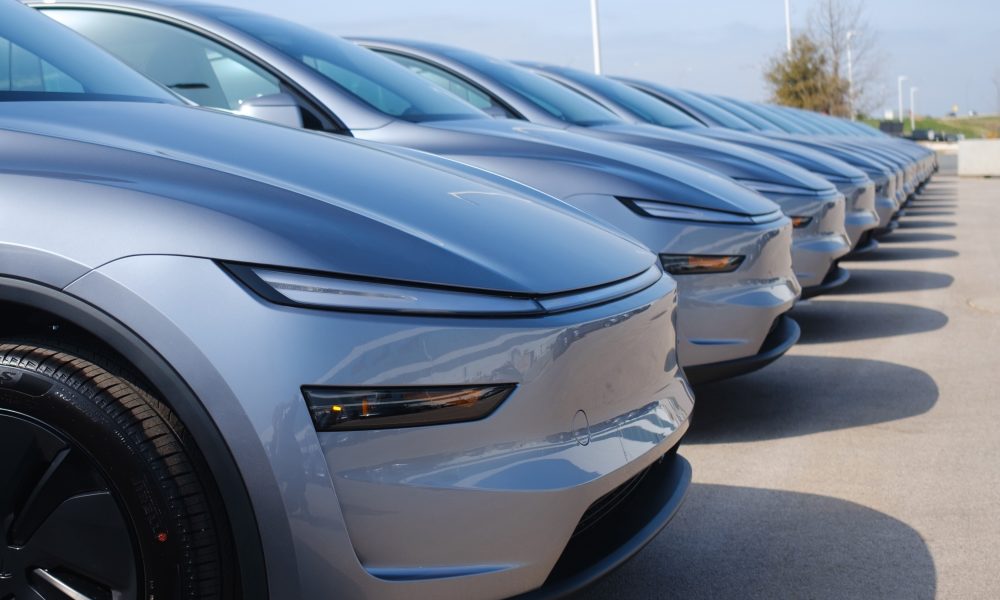The IRS adjusted the EV tax credit rule last week, which was a big win for consumers. It now allows car buyers to lock up an agreement to buy a vehicle instead of having to take delivery before the deadline of September 30.
This has tremendous advantages for both consumers and companies. For consumers, they are no longer rushed to take delivery of a car that might not be their exact pick just to qualify for the tax credit. Instead, they can build the car they want, make a marginal down payment on it, and still take delivery, even after September 30, and still get the $7,500 off.
Tesla set to win big after IRS adjusts EV tax credit rules
For carmakers, they are no longer restricted by production capacity or supply bottlenecks, and can get a vehicle to a buyer after the deadline instead of delivering bad news. The consumer just needs to commit monetarily first.
However, there are broader implications of the credit’s new rules, which could be viewed as an “extension,” although, fundamentally, the credit could mask the true issue that many EV makers will face: generally speaking, electric cars are still too expensive.
Consumer Behavior and Market Dynamics
Everyone is expecting EV makers’ Q3 sales to be slightly higher than normal, as this is the final quarter when the $7,500 EV credit will be available. Buyers are rushing to take advantage of the credit before it expires.
The urgency of car buyers to take advantage of the credit seems to be a positive in the short term. However, there are some indications that this could lead to a “boom-and-bust” cycle, and how EVs sell in subsequent quarters could be a very disappointing reality.
If EVs were at a price point where they were more affordable and people did not need $7,500 off to buy one, we would not be seeing this influx of orders. The fundamental issue with the tax credit is the fact that it is a bit of a crutch for automakers, and that crutch is about to be removed — abruptly.
Sustained incentives for EVs are something that was never going to be available under the Trump Administration. The true demand of EVs will be revealed in Q4, and likely over the first two quarters of 2026.
Policy Instability is a Barrier for Consumers…and Automakers
With the One Big Beautiful Bill that the Trump Administration rolled out, the tax credit’s sunset came abruptly.
Previously, the credit’s termination was set for 2032, but the change, which is absolutely justified in terms of the White House’s powers, sets a tough precedent moving forward: different administrations and different planning for how government funds are spent could dramatically alter plans.
For consumers, their confidence in the stability of these types of programs will be decreased. If a Democrat gets elected in 2028, will the credit return? It’s likely that the credit could become an “On for 4, Off for 4” type of arrangement, depending on the party in the White House, as well as the concentration of that party in the House and Senate.
For automakers, the long-term planning of their supply chains, including whether domestic manufacturing is prioritized and how much capital to allocate toward EVs, becomes a significant question.
If it needs volume to bring down EV prices, the absence of a credit will impact that drastically. Fewer people being able to afford EVs because of their premium prices could put companies in a very strange predicament.
Their roadmaps for their future lineups will be impacted, and they may have to go back to the drawing board for future plans.
Environmental and Economic Stakes
It is important to remember that the EV tax credit was not just a way to make cars more affordable. It was a tool to reduce emissions from passenger transportation. This is the largest source of greenhouse gases in the United States.
Ending the credit risks slowing progress toward climate goals and ceding ground to global competitors, especially China, a global tech hub that has a large population willing to embrace new tech.
Xiaomi CEO congratulates Tesla on first FSD delivery: “We have to continue learning!”
The U.S. needs a stable, long-term strategy to incentivize both consumers and manufacturers to reach climate goals. Short-term band-aids are not going to drive innovation or adoption forward.
Call to Action
To secure a thriving and equitable future for the EV industry, Congress could consider a variety of alternatives that benefit buyers who could use assistance. A tiered incentive program that prioritizes affordability and American innovation would benefit buyers who prefer an EV while making them accessible to lower and middle-income families and buyers.
Higher credits for EVs priced under $40,000 to reach these income levels would be ideal. Additionally, bonuses for vehicles and batteries that are domestically sourced would also encourage car companies to bring manufacturing to the United States, while also helping car buyers lean toward vehicles built here.
The rush to secure credits by consumers proves that incentives work. The United States should be working toward a long-lasting framework that makes EVs accessible to all, while giving the country a competitive edge to compete against powerhouses like China.

